Why to Eat Tokoroten (Japanese Jelly Noodles)
Seasonal eating is one of the foundations of Japanese cuisine, and summertime is the time in Japan for enjoying refreshing tokoroten jelly noodles. Tokoroten is a type of traditional Japanese noodle dish that has been eaten in Japan for over a thousand years. It’s made from kanten, the gelatin of the native seaweed tengusa, and is comprised of around 98% water. It’s low-calorie, carb-free, and gluten-free but also high in dietary fiber. It’s no wonder then that tokoroten is so popular today, not only as a traditional Japanese food but also as a healthy alternative to noodles or pasta. Read on to learn all about this unique Japanese noodle.
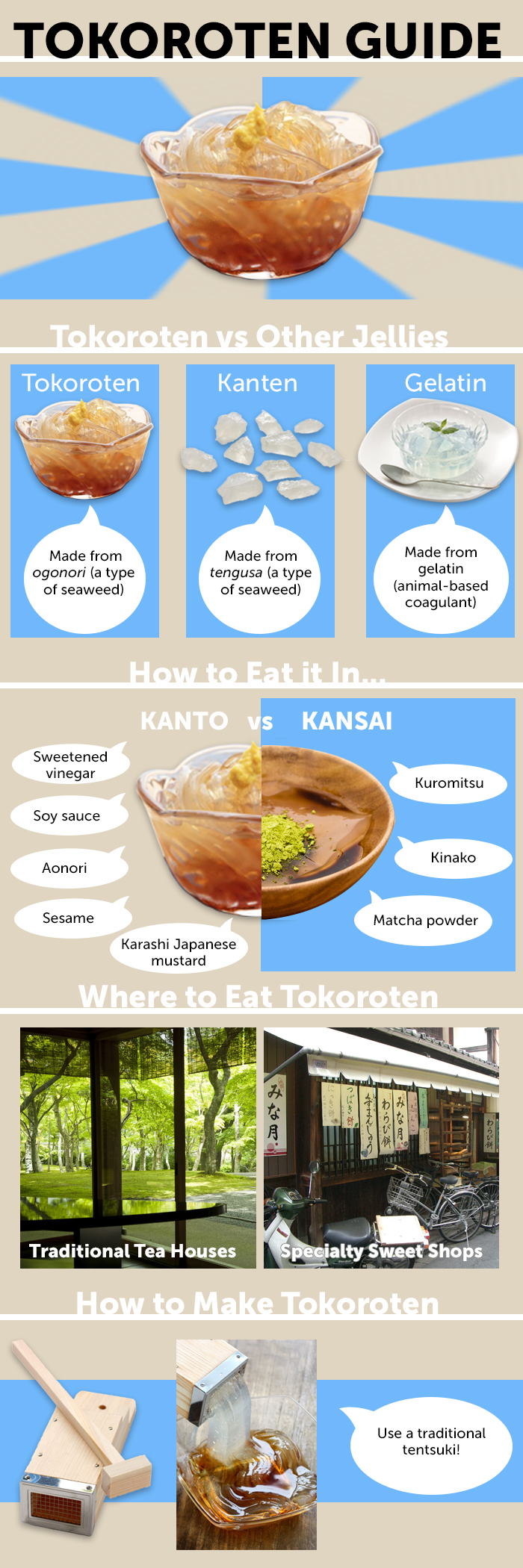
A Guide to Tokoroten, the Lesser-Known Japanese Noodles
History
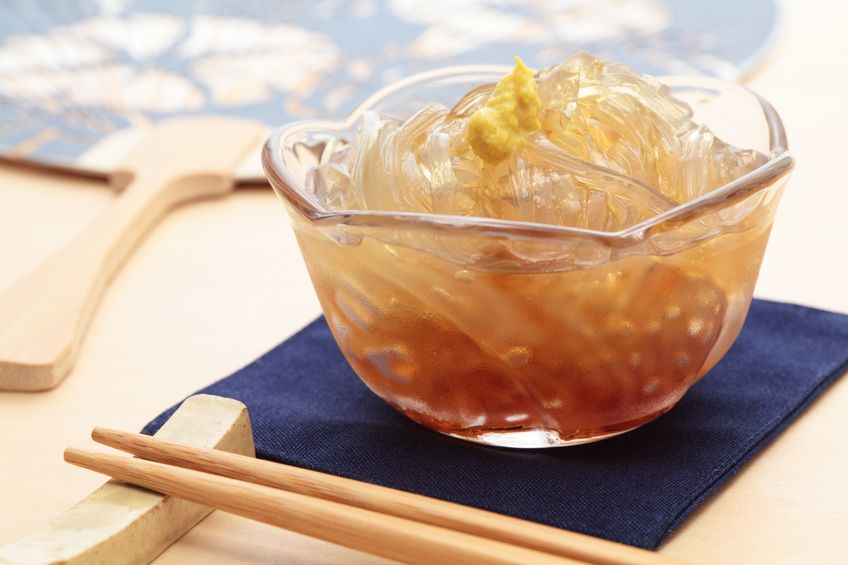
Tokoroten noodles are believed to have first arrived to Japan during the Nara period via China. However, the process of harvesting, drying, and extracting the gelatin from tengusa seaweed was so labor intensive that tokoroten were reserved only for the aristocracy. This changed after the discovery of “kanten” gelatin in 1658 by an innkeeper who threw out some excess tokoroten noodles and saw that the noodles dried into sheets of kanten, which could be stored for later use. This discovery made it much easier for people to use kanten gelatin and make tokoroten, and it developed into a popular summertime snack in the town of old Edo (modern-day Tokyo) during the Edo period. Today, the vegan-friendly kanten has many applications in Japanese cooking, from making traditional sweets known as “wagashi” to tokoroten noodles in the summertime.
Tokoroten vs Other Jellies
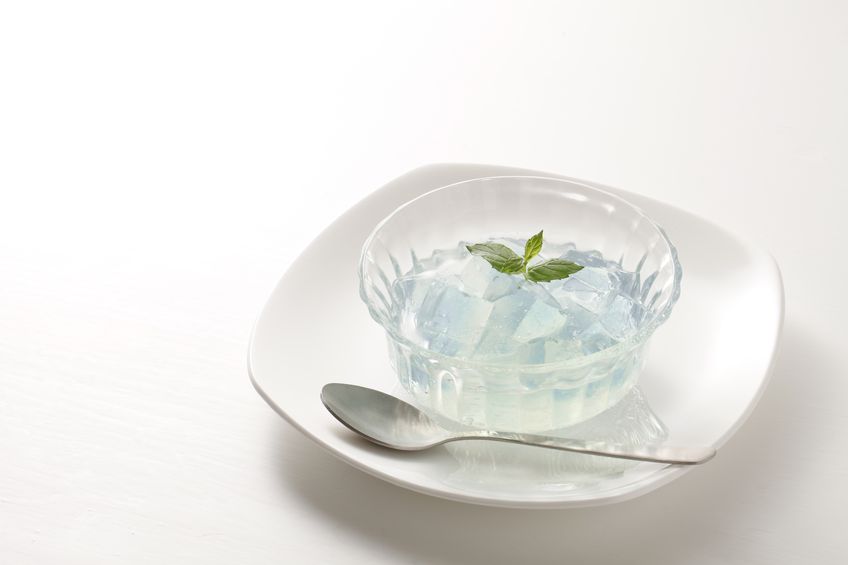
While the term “agar-agar” may be used synonymously in English for different types of seaweed-based gelatins, in Japan this actually refers to two different kinds of gelatin: agar and kanten. Agar is a type of gelatin made with various types of red seaweed and has a wobbly, more jelly-like texture and softer mouthfeel; it’s frequently used in making soft jellies and desserts like pudding and custard in Japan. Kanten, on the other hand, is a firmer gelatin made from tengusa (a specific type of red seaweed) or ogonori seaweed. It may be sold in powdered or solid block form and is used to make tokoroten noodles along with wagashi sweets such as yokan (jellied bean paste sweets).
How to Eat Tokoroten
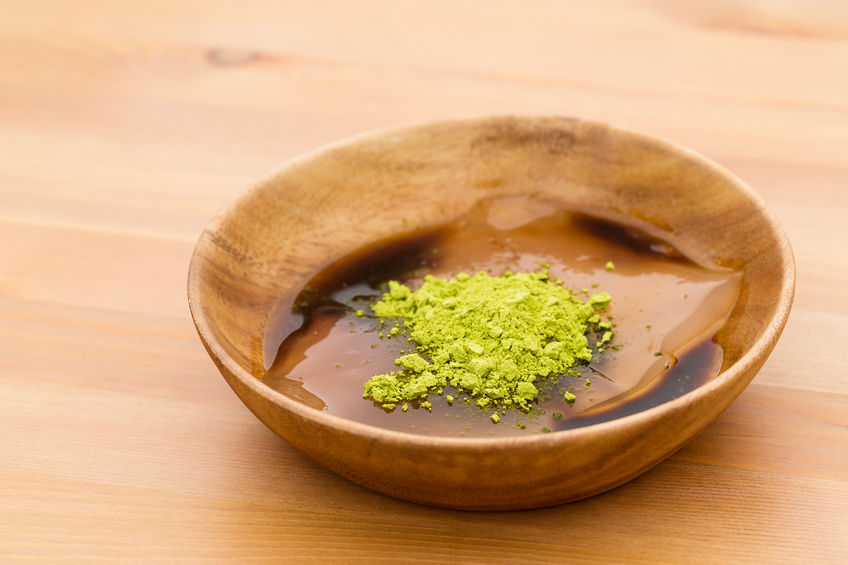
Common flavorings and garnishes for tokoroten differ by the region. In the eastern Japan region known as Kanto, as well as in Nagoya and Hiroshima, tokoroten noodles are typically served with rice vinegar and soy sauce, or rice vinegar, soy sauce, and mirin (sweet rice wine). Nori seaweed, aonori (powdered seaweed), toasted sesame seeds, and karashi (hot Japanese mustard) may be used to garnish the noodles for a refreshing flavor. In the Kansai region of western Japan, tokoroten are typically served with sweet toppings such as kuromitsu (a type of dark syrup made with brown sugar), kinako (toasted soybean flour) powder, and assorted fruit. It’s a popular summertime treat that can be enjoyed with little guilt.
Tokoroten jelly noodles can also be enjoyed as a dietary alternative for more calorie-heavy noodles and pasta. Unlike other low-calorie, zero-carb, and gluten-free noodles such as shirataki, which is made from the konnyaku yam and may have an off-putting odor, tokoroten noodles are odorless. So it may be a good choice for people who don’t enjoy the smell of shirataki.
Where to Eat Tokoroten
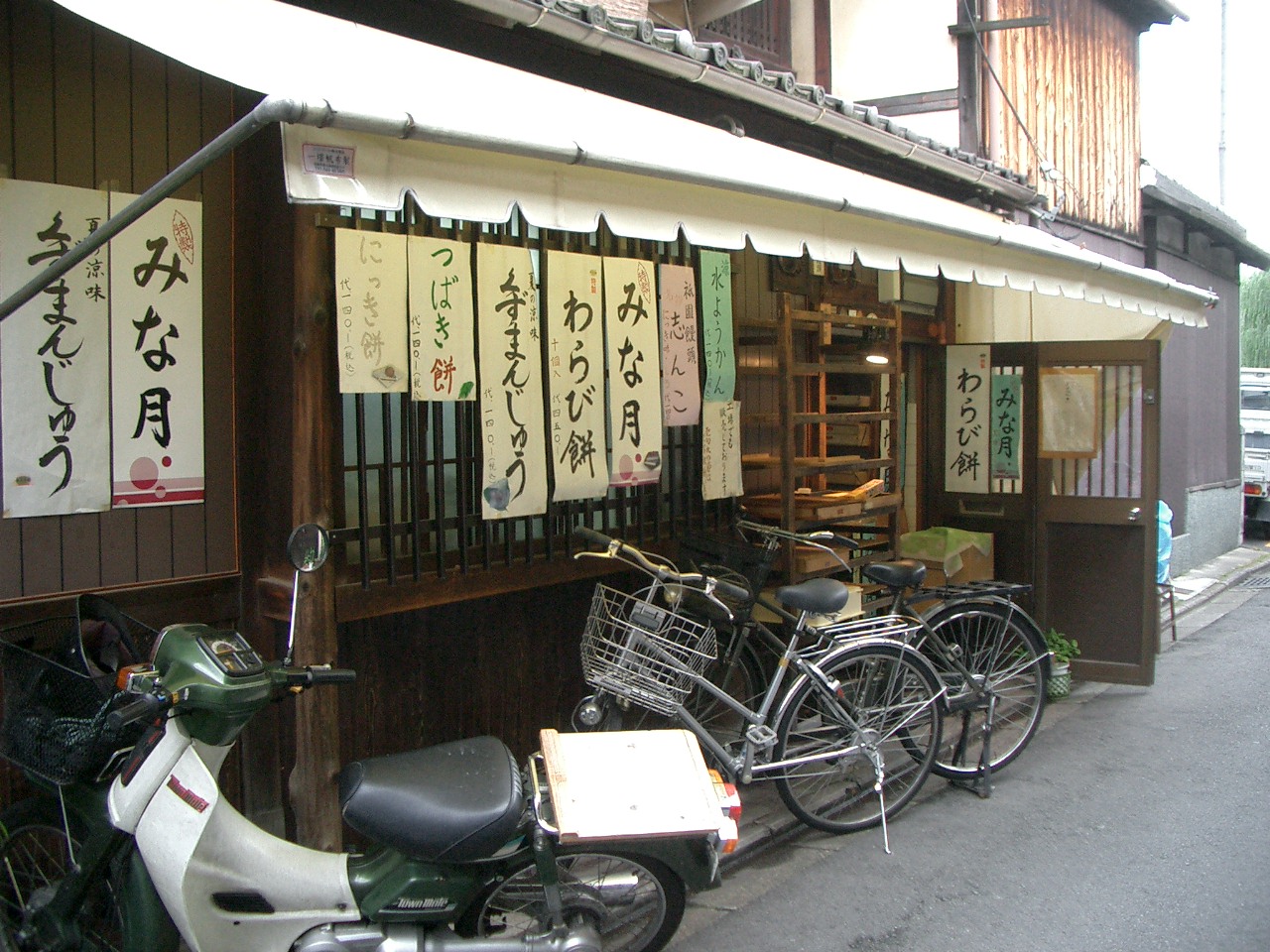
Tokoroten can be purchased at supermarkets or found on the menu at traditional tea houses called “cha-ya” and specialty Japanese sweets shops. It can also be made at home.
How to Make Tokoroten
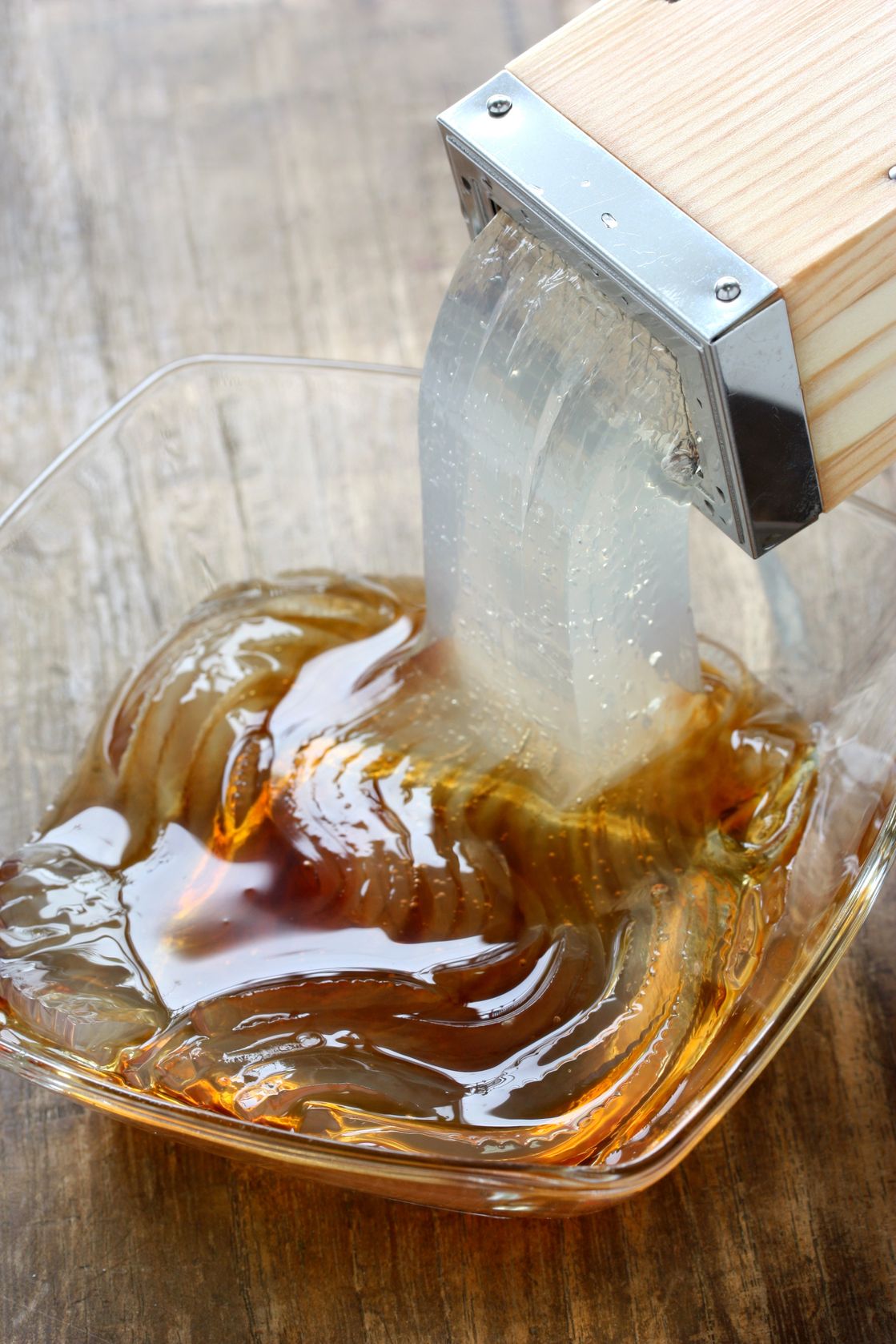
If you can’t get to Japan this summer, you can try making your own tokoroten at home. You’ll need dried tengusa seaweed or kanten, both of which can be ordered online. You’ll also need a special tokoroten noodle press called a “tentsuki”. It’s shaped like a block with an opening on one side for inserting tokoroten gelatin and a grid on the other side for squeezing the noodles through.
If you’re using powdered kanten, simply dissolve in hot water and allow it to cool into solid tokoroten. If using dried tengusa, boil the seaweed in water and a little vinegar until the liquid thickens with gelatin. Strain out the seaweed through a cheesecloth and allow the liquid gelatin to cool. You can pour the liquid into molds so the tokoroten forms into large chunks. Take a chunk of the solidified tokoroten and place it in the tentsuki noodle press, pushing down on the bar until the noodles come out of the grid end.
Eat the tokoroten boiling the noodles will cause them to dissolve—with your choice of condiments. To make the sweetened vinegar sauce that’s popular in the Kanto area, combine 3 parts rice vinegar and 2 parts soy sauce for a sauce called “nihaizu”. Or combine rice vinegar, soy sauce, and mirin in a 3:2:1 ratio for “sanbaizu” sauce. Sugar can be substituted for mirin in a pinch. Top the tokoroten noodles with the sauce and your choice of garnish.
For Kansai style tokoroten, you can make kuromitsu syrup at home by combining 2 parts dark brown sugar with 1 part water. Simply bring the syrup to a boil and allow to cool before using. The kinako powder is a bit more intensive to make. Add freshly toasted soybeans to a food processor and reduce as much as possible. Then use a mortar and pestle to break the soybeans down even further until the texture is very fine like flour and has a nutty aroma. Top the tokoroten noodles with the kuromitsu once it’s cooled and some kinako powder. Add some fresh fruit if you’d like.
Be Sure to Try Tokoroten, Healthy and Delicious Japanese Jelly Noodles
Tokoroten is a unique summertime food that’s not only healthy and refreshing but also low-calorie, carb-free, and gluten-free. Be sure to give it a try the next time you’re in Japan, or try making it at home. Itadakimasu!








